Newsletter Signup
Stay up to date on all the latest news from Boston.com
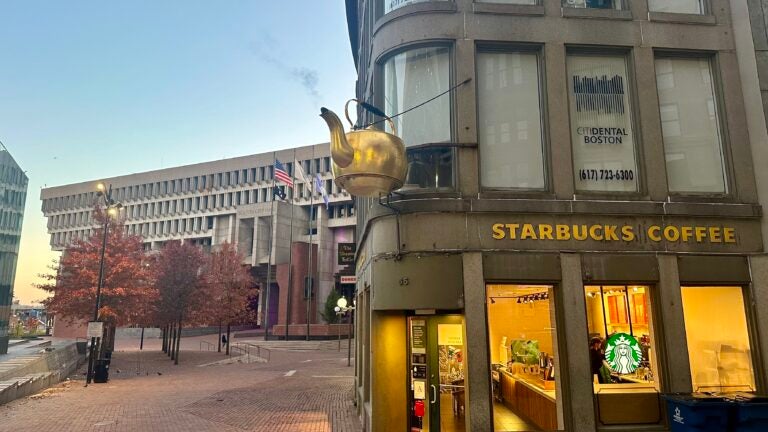
On the morning of New Year’s Day 1875, a huge crowd of Bostonians gathered outside of the Oriental Tea Company’s Court Street storefront. By noon, at least 10,000 people had joined the throng, spilling into the street and blocking traffic in Scollay Square — a part of downtown that would later become Government Center.
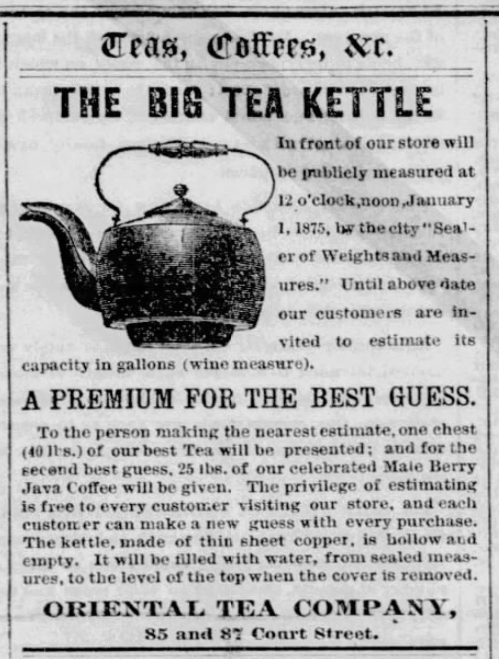
They had come to watch William Reed, the city’s sealer of weights and measures, measure the capacity of the tea company’s giant golden tea kettle. Made by local coppersmiths Hicks and Badger in 1873, the kettle normally hung above the entrance to Oriental Tea, its oversized, animatronic spout blowing puffs of steam into the air as if it were getting ready to whistle.
On this day, the kettle had been moved to a raised platform outside the store and its lid removed. The onlookers watched in amazement as a 12-year-old boy popped out from inside and jumped down onto the stage. Their excitement grew as a second boy climbed out, and then a third, until eight boys had sprung forth from the apparently-bottomless kettle. Finally, the crown of a ninth head poked out and a six-foot-tall man emerged. The crowd went wild.
Reed then measured the kettle’s volume by filling it with water, working in five-gallon increments for more than an hour. He eventually calculated its capacity to be 227 gallons, two quarts, one pint, and three gills.
(What is a gill, you ask? It’s an antiquated unit of measure equal to one quarter of a U.S. pint, or four fluid ounces.)
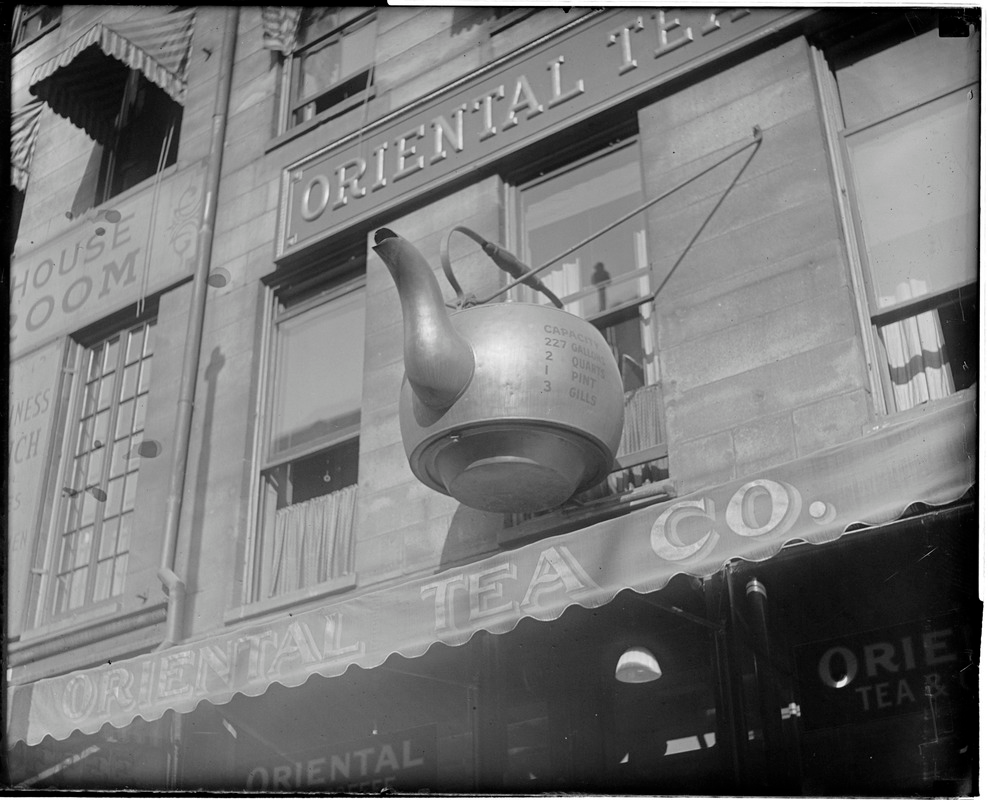
It was one of the most memorable and successful advertising stunts in Boston’s history. The Boston Evening Transcript, the Boston Post, and the Globe all chronicled it in detail. Thousands of people submitted guesses for the final measurement, and Oriental Tea awarded generous supplies of the company’s proprietary tea and coffee to the winners. The kettle was emblazoned with its precise volume and re-affixed above the storefront, where it became a local landmark.

For decades, Oriental Tea remained a fixture of Scollay Square. But by the 1960s the formerly bustling commercial district had gone into decline. As wealthier Bostonians departed to the suburbs, the square emptied out and developed a reputation as a shabby red-light district. Oriental Tea was one of the remaining shops evicted by the Boston Redevelopment Agency in 1966 as it began a massive urban renewal project, bulldozing much of the area to make space for the brutalist Government Center.
Oriental Tea didn’t survive the redevelopment, but its signature kettle did. The tea shop’s owner, local restaurateur Nathan Sharaf, bought a storefront down the street and moved the kettle there, opening up the Steaming Kettle Coffee Shop. From its new home at 65 Court St., the kettle presided over the construction of City Hall and the Government Center MBTA station.
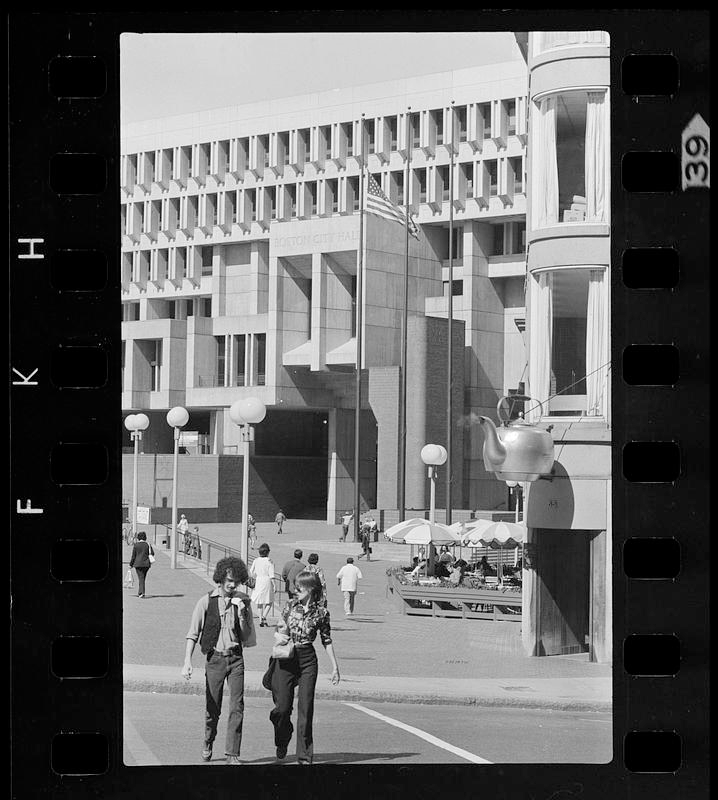
The Steaming Kettle thrived for a time but closed down in 1988 when Sharaf died. The shop changed hands over the next few decades, becoming a Croissant Du Jour, a Coffee Connection, and finally, in 1997, a Starbucks.
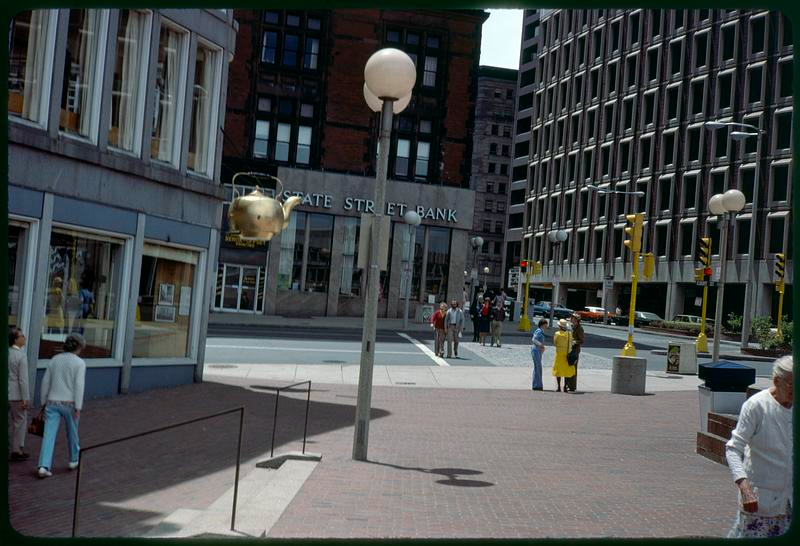
The Seattle-based coffee giant still calls the shop its “Steaming Kettle” location. Every few years, Starbucks takes the kettle down to make repairs and refresh its gold leaf exterior.
Almost nothing of the former Scollay Square remains in today’s Government Center. But the gilded tea kettle is still there, steaming and glinting against the brick-and-concrete backdrop of City Hall Plaza.
As one Bostonian remarked to the Globe in 1980, “it’s really a shrine more than a sign.”
Stay up to date on all the latest news from Boston.com
Stay up to date with everything Boston. Receive the latest news and breaking updates, straight from our newsroom to your inbox.
Conversation
This discussion has ended. Please join elsewhere on Boston.com